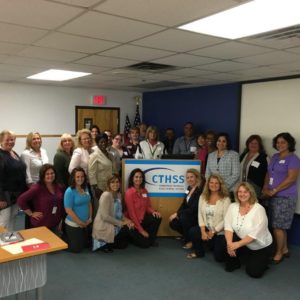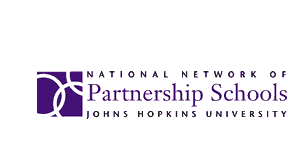Middletown, Connecticut

Row 1 (l to r): Jess Bibeau, Jackie Schlosser, Margaret Ortiz, Christina Stisser, Jessica Huttig, Sandi Casberg (CTHSS FET Coordinator, NNPS Key Contact), Jill Dymczyk (CTHSS FET Coordinator, NNPS Key Contact)
Row 2 (l to r): Penny Finlayson (CTHSS FET Technical Assistant, NNPS Key Contact), Robyn Baeder, CeCe Sheppard, Tammy McLellan, Tonisha Jones, Kelly Flaherty, Sue Schryver, Greg Forte, Sue Cribari, Mia Becton, Dr. Nivea Torres (Superintendent), Norma Valsecchi, Cynthia Kisner
Row 3 (l to r): Wilder Zandonella, Mike Barone, Eve Halter, Bill Weidner, Rolando Navarro
Not pictured: Jaime Miller and Deb Berube
Family Engagement Activity Form
CTHSS has a Family Engagement Policy that requires each school to develop a program for engaging families linked to student success. The district leaders are aware that the school-based Action Teams for Partnerships (ATPs) are always concerned about the amount of paperwork they are required to submit at the end of the year.
The district leaders reviewed the expectations about reports and evaluations and worked to solve this challenge. They streamlined forms and merged required paperwork wherever possible. New procedures were developed to assist teams to document and submit needed information. This reduced redundant paperwork and increased efficiency. One form, Family Engagement Activity Form, was presented and discussed at an ATP cluster meeting so that all teams would be able to use it effectively. It is always informative to collect, review, and revise report forms to reduce duplication, increase clarity, and ensure useful plans and evaluations.
CTHSS Staff Liaison Cluster Meetings
District leaders in the Connecticut Technical High School System (CTHSS) have several unique challenges. The 17 technical high schools in this district are spread out across the state. Each school receives students from 18 to 25 towns. Each high school conducts a “dual” curriculum for students to meet state standards for a high school diploma and business and industry standards in a specific trade. The District Leaders for Partnerships know that ATPs from all schools benefit by coming together periodically to share best practices, solve challenges, and improve outreach to students’ parents and community partners. This year, the district leaders streamlined their quarterly cluster meetings by inviting the staff liaison from each school’s ATP to attend the meetings and take the information and ideas back to their full ATPs. This saved ATP Co-Chairs from having to be released from school assignments to travel across the state for the district meetings.
A typical cluster meeting includes an update from the district leaders on new information, research, or policies; sharing best practices and comparing approaches (e.g., to Evening of the Arts Nights); time to discuss challenges to increase family engagement at school, home, and in the community; ways to recruit, train, and engage high school students for the ATP; and other topics. The liaisons selected topics for the next year’s cluster meetings including preparing better plans and good budgeting.
CTHSS Staff Liaison Cluster Meetings is featured in Promising Partnership Practices 2016.

